History of linguistic science
This annotated list illustrates the evolution of the linguistic sciences and summarizes the contributions of famous linguists that collectively formed the foundation for Dr. Joseph Yeager’s hybrid decision strategy technology. These great minds are listed in the approximate chronological order of their contributions.|
Sapir, Edward. [1921]. Language. Charleston, S.C. Bibliobazaar. This linguist and anthropologist offered insights into the relationship between thought and language mechanisms. He noted how language worked to produce unique, local terminology for common constructs across various populations and languages. The Sapir-Whorf hypothesis found that people will react to the same real-world experience differently (e.g., the experience of time) through the organization of their language architecture. If there is no future tense in your language, your response to persuasive incentives will differ from someone who has a future time tense. Communicators must engineer their persuasions accordingly. |
|
|
|
|
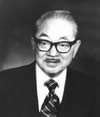 |
Hayakawa, S. I. [1933]. Language in thought and action (5th ed.). Orlando, FL: Harcourt Brace Jovanovich. His work offered practical tools for analyzing and managing communications. One of his best known tools is the “Ladder of Abstraction” which maps the fact that in a single spoken sentence, for example, there are, simultaneously, multiple layers of linguistic characteristics occurring in that moment. Once mapped, the layers determine how communications will best impact the audience. This feature of language is a major element when engineering message design. |
|
|
|
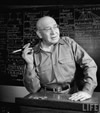 |
Korzybski, Alfred. [1933]. Science and sanity: An introduction to non-Aristotelian systems and general semantics. Institute of General Semantics. He used the experimental model of science in everyday communications. He demonstrated that people experience the world through their “abstractions”, i.e., their mental maps of the world, via nonverbal impressions and verbal indicators expressed within language. General Semantics was used with some success to treat WWII veterans. |
|
|
|
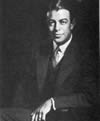 |
Whorf, B. L. (1956). Language, thought and reality: Selected writings of B. L. Whorf. New York: John Wiley. A practicing engineer, he is known for documenting that experience is perceived as impressions which have to be organized by the linguistic systems of our minds. If you change the language you can change the experience and the associated choices. He illustrated how word choice innocently created a dangerous situation. In one case, “empty” gasoline drums are actually full of explosive fumes. Workmen thinking that “empty” meant “safe”, created a disaster. The Sapir-Whorf hypothesis linked language and thought, and how the structure of language organizes perception, choice and decision making. |
|
|
|
 |
Osgood, C. E., Succi, G. J., & Tannenbaum, P. H. (1957). The measurement of meaning. Urbana, IL: University of Illinois Press. Osgood developed the semantic differential which measured the meaning of language concepts behind phenomena such as attitudes. He bridged psychology and linguistics by delving into how people use language to describe subjective experience as well as each another. He identified implicit, higher order themes within language patterns such as good versus bad, strong versus weak and active versus passive. His superficial quantification strategies limited the usefulness of his findings. |
|
|
|
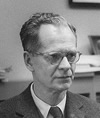 |
Skinner, B.F. (1957). Verbal behavior. Acton, MA. Copley Publishing Group. Skinner analyzed the verbal behavior of people as they actually performed speech. He used cause-effect experimental methods, in the tradition of Ivan Pavlov, to demonstrate that linguistic behavior can be analyzed through operant conditioning, i.e., connecting the dots between an experience and its consequences. He delved into reward and punishment contingencies as rule-based forces that change choices and decisions. |
|
|
|
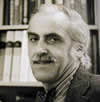 |
McClelland, D. (1961). The achieving society. Princeton: Van Nostrand. McClelland, a Harvard psychologist, developed cross cultural methods of language content analysis to profile motivations such as affiliation, achievement and power. Like much of what happens in marketing today, his work was limited by describing only the content of what people say. He did not succeed in identifying the underlying, unconscious language characteristics that predict and change the choices people make. |
|
|
|
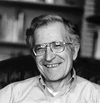 |
Chomsky, N. (1968). Language and mind. New York: Harcourt. Chomsky is noted for his work on linguistic deep structure and generative grammar, i.e., the rules that predict language behavior. He has had a significant and controversial cultural influence on matters relating to communications, change and decision making. He showed that there are universal mechanisms in language that drive behavior. His work made clear that automatic, out-of-awareness, language processes drive perception, motives and decisions. |
|
|
|
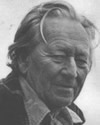 |
Bateson, Gregory. (1972). Steps to an ecology of mind: Collected Essays in Anthropology, Psychiatry, Evolution, and Epistemology. University Of Chicago Press. Bateson viewed language and behavior in terms of information and cybernetic systems. He mapped features of behavior such as competition, dependency and the effects of feedback loops. His work meshed with the beginnings of systems analysis, applied information theory and cybernetics. A systems approach helped move language and behavior from theoretical to real-world applications. |
|
|
|
 |
Bandler, R., & Grinder, J. (1975). The structure of magic: Vol. 1. Palo Alto, CA: Science and Behavior Books. Using linguistics, math and literal observations of change-intended language, they demonstrated game changing insights into how communications features such as speech, emotion, and imagery reflect the linguistic maps of personal experience and decision making. They developed a collection of enduring methods to change language maps. They identified linguistic mechanisms that change the maps which, in turn, would change the choices made by people. |
|
|
|
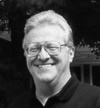 |
Yeager, Joseph (1984) Chairman, SommerYeager Dr. Yeager creates the next generation of related technologies and develops proprietary, predictive deep language algorithms that identify the complete conscious and unconscious decision strategies in individuals and large audiences as well as the cause-effect connections required to change a mind from “no” to “yes”. Additionally, he maps the underlying mechanisms that drive motivation and choice. His algorithms evolved from over 40 years of personal research and over 30 years of successful use in executive coaching, advertising, marketing, recruiting, selection and training applications for Fortune 500 clients. |
